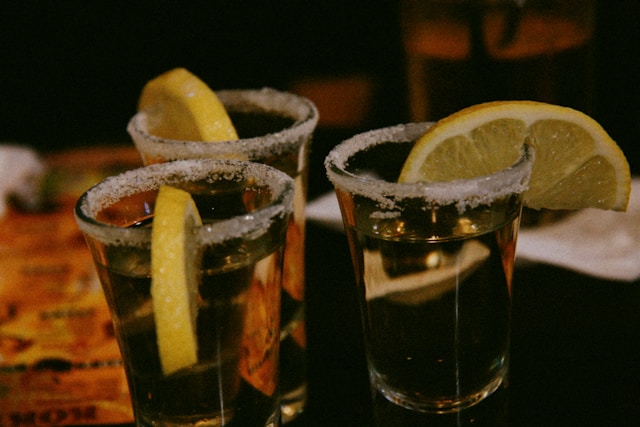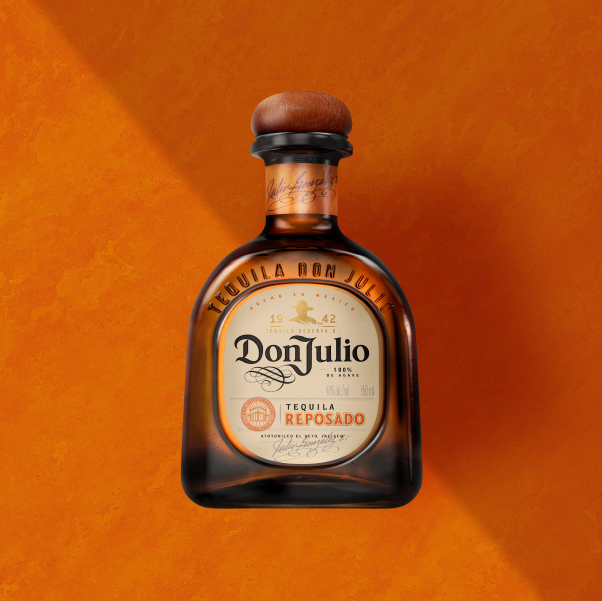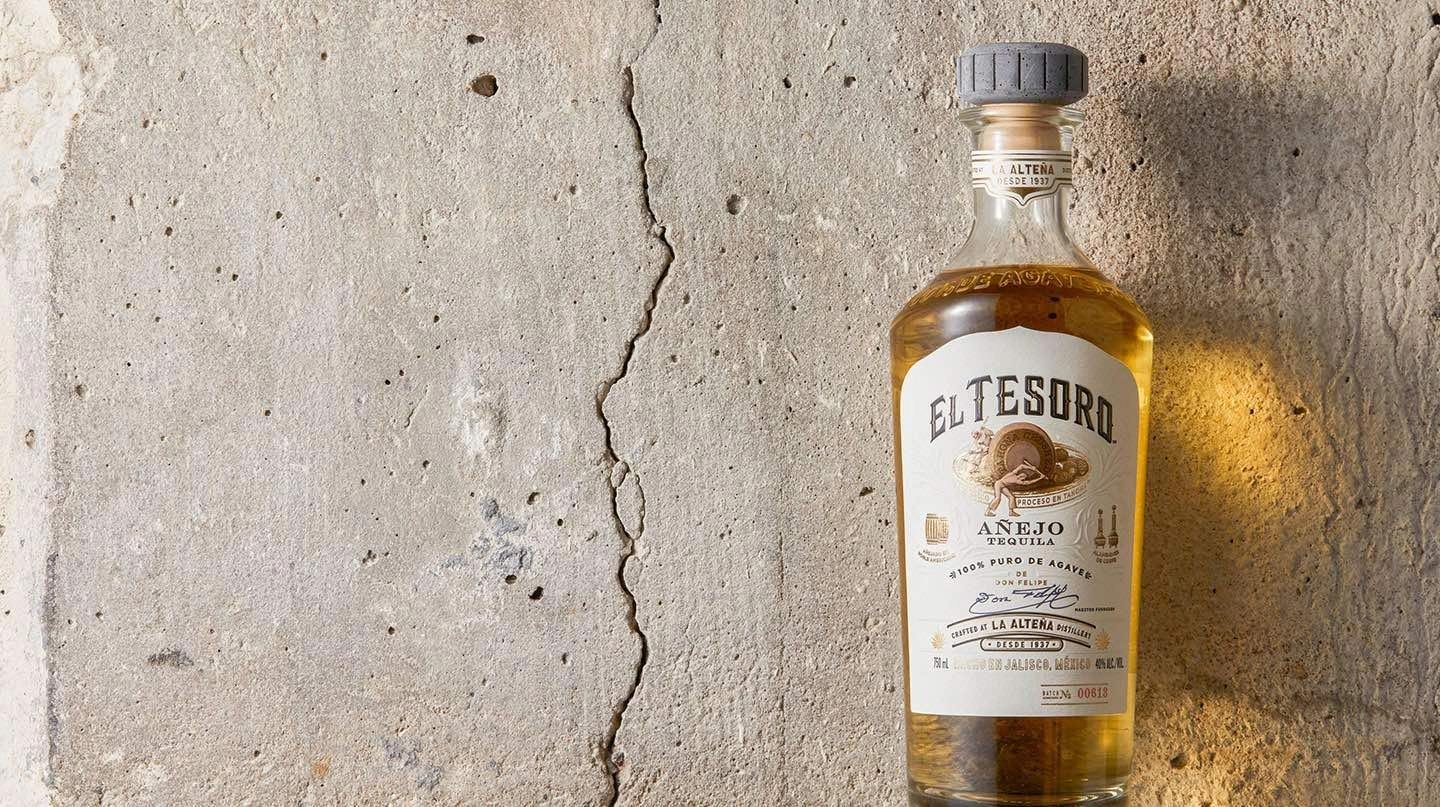
Are you a tequila enthusiast who’s looking to expand their knowledge of this beloved spirit? If so, you might have heard of the terms “reposado” and “añejo” tequila. These two types of tequila are aged for different periods of time, resulting in distinct flavors and characteristics.
Both Reposado and Añejo tequila have their own unique characteristics that make them stand out. Whether you prefer a milder flavor or a more complex one, there is a tequila out there for everyone. It’s important to experiment with different types of tequila to find the one that suits your taste buds best.
 photo credit: www.donjulio.com
photo credit: www.donjulio.com
Table of Contents
Facts About Reposado Tequila
Reposado tequila is a type of tequila that is aged in oak barrels for a minimum of two months and a maximum of one year. The aging process gives the tequila a distinct flavor and color. Here are some facts about reposado tequila that you should know:
History of Reposado Tequila
Reposado tequila was first introduced in the 1970s as a way to bridge the gap between blanco and añejo tequila. The name “reposado” means “rested” in Spanish, which refers to the aging process. The first reposado tequila was aged in used bourbon barrels, which gave it a unique flavor.
How is Reposado Tequila Made?
Reposado tequila is made from 100% blue agave, which is grown in the Jalisco region of Mexico. The agave is harvested and cooked in an oven, which converts the starches into sugars. The juice is then extracted and fermented with yeast to produce alcohol. The alcohol is distilled twice to remove impurities and create a clear liquid.
The clear liquid is then aged in oak barrels for a minimum of two months. The barrels can be made from a variety of woods, including American oak, French oak, and Mexican oak. The longer the tequila is aged, the more flavor it develops.
Types of Reposado Tequila
There are several types of reposado tequila, each with its own unique flavor profile. Some reposado tequilas are aged in barrels that have been previously used to age other spirits, such as bourbon or cognac. This can give the tequila a distinct flavor.
Price Range of Reposado Tequila
Reposado tequila can range in price from $30 to $60 per bottle, depending on the brand and aging process. Some high-end reposado tequilas can cost up to $150 per bottle. It’s important to keep in mind that extra añejo tequilas can cost hundreds of dollars per bottle and are aged for even extended periods of time (up to 5 years or more).
Notable Brands of Reposado Tequila
There are many notable brands of reposado tequila, including Don Julio, Herradura, and Casamigos. Each brand has its own unique flavor profile and aging process. It’s important to try different brands to find the one that you like the best.
 photo credit: www.eltesorotequila.com
photo credit: www.eltesorotequila.com
Facts About Añejo Tequila
If you’re a tequila lover, you might be familiar with Añejo, one of the most popular types of tequila. Añejo tequila is known for its smoothness, complexity, and rich flavors. In this section, you’ll learn about the history, production, types, price range, and notable brands of Añejo tequila.
History of Añejo Tequila
Añejo tequila is a relatively new type of tequila that was created in the 20th century. It was first produced in the 1940s by Don Cenobio Sauza, a tequila producer who wanted to create a premium tequila that could be enjoyed like a fine whiskey. Añejo tequila quickly gained popularity and became a favorite among tequila connoisseurs.
How Is Añejo Tequila Made?
Añejo tequila is made from 100% blue agave, which is grown in the Jalisco region of Mexico. The agave is harvested and cooked in ovens, and the juice is extracted and fermented. The fermented juice is then distilled twice and aged in oak barrels for at least one year. The aging process gives Añejo tequila its distinctive flavor and color.
Types of Añejo Tequila
There are two types of Añejo tequila: regular Añejo and Extra Añejo. Regular Añejo tequila is aged for at least one year but no more than three years, while Extra Añejo tequila is aged for more than three years. Extra Añejo tequila is rare and expensive, but it has a smoother and more complex flavor than regular Añejo tequila.
Price Range of Añejo Tequila
Añejo tequila is more expensive than other types of tequila because of its aging process. The price range of Añejo tequila varies depending on the brand and the aging process. Regular Añejo tequila can cost anywhere from $30 to $100, while Extra Añejo tequila can cost hundreds of dollars per bottle.
Notable Brands of Añejo Tequila
There are many notable brands of Añejo tequila, including Don Julio, Herradura, El Tesoro, and Casa Noble. Each brand has its own unique flavor and aging process, so it’s worth trying different brands to find the one that suits your taste.
Reposado vs Añejo Tequila
If you’re a tequila lover, you may have noticed that there are different types of tequila available in the market. Two of the most popular types of tequila are Reposado and Añejo. While both are aged tequilas, they have some key differences that set them apart from each other.
Differences in Flavor
One of the most significant differences between Reposado and Añejo tequila is their flavor. Reposado tequila is aged for a minimum of two months and a maximum of one year, while Añejo tequila is aged for a minimum of one year and a maximum of three years. Due to the aging process, Reposado tequila tends to have a milder flavor than Añejo tequila. Reposado tequila often has notes of vanilla and citrus, while Añejo tequila can have flavors of dried fruits and cooked agave.
Differences in Serving and Pairing
When it comes to serving and pairing, Reposado and Añejo tequila are also different. Reposado tequila is best served in a snifter glass, while Añejo tequila is best served in a rocks glass. Reposado tequila is also a great choice for mixing in cocktails, as it has a milder flavor that won’t overpower other ingredients. On the other hand, Añejo tequila is best enjoyed on its own or with a small amount of ice.
When it comes to pairing, Reposado tequila pairs well with spicy or citrusy foods, while Añejo tequila pairs well with rich or sweet dishes. For example, Reposado tequila is a great match for fish tacos or ceviche, while Añejo tequila is perfect with a rich chocolate dessert or a cheese plate.
Conclusion
Now that you have learned about the differences between Reposado and Añejo Tequila, you can make an informed decision on which one to choose for your next cocktail or shot.
Ultimately, the choice between Reposado and Añejo Tequila comes down to personal preference. Whether you’re a Tequila connoisseur or a casual drinker, there’s a Tequila out there for everyone. So go ahead and explore the world of Tequila, and don’t forget to drink responsibly!
Related Posts
Here are some other articles you might find helpful if you’re interested in learning more about different types of spirits:
- In Pictures: Scotland VS Wales Whisky Tasting: This article takes a look at a whisky tasting event that compared Scottish and Welsh whiskies. If you’re interested in learning more about the different types of whiskies available, this is a great article to check out.
- Old-Style VS Modern: was whisky “better back then”?: This article explores the debate over whether whisky was better in the past. If you’re interested in the history of whisky and how it has changed over time, this article is a must-read.
- Maker’s Mark vs Bulleit Bourbon: Which One Should You Choose?: If you’re a fan of bourbon whiskey, this article is a great resource for comparing two popular brands. Learn about the differences between Maker’s Mark and Bulleit and decide which one is right for you.
- Rum vs Whiskey: What’s the Difference?: If you’re curious about the differences between rum and whiskey, this article is a great place to start. Learn about the history of these two popular spirits and how they differ in terms of production, flavor, and more.
- Brandy vs Whiskey: What’s the Difference?: This article explores the differences between brandy and whiskey. If you’re a fan of spirits and want to learn more about the subtleties that separate different types of alcohol, this article is a great resource.



